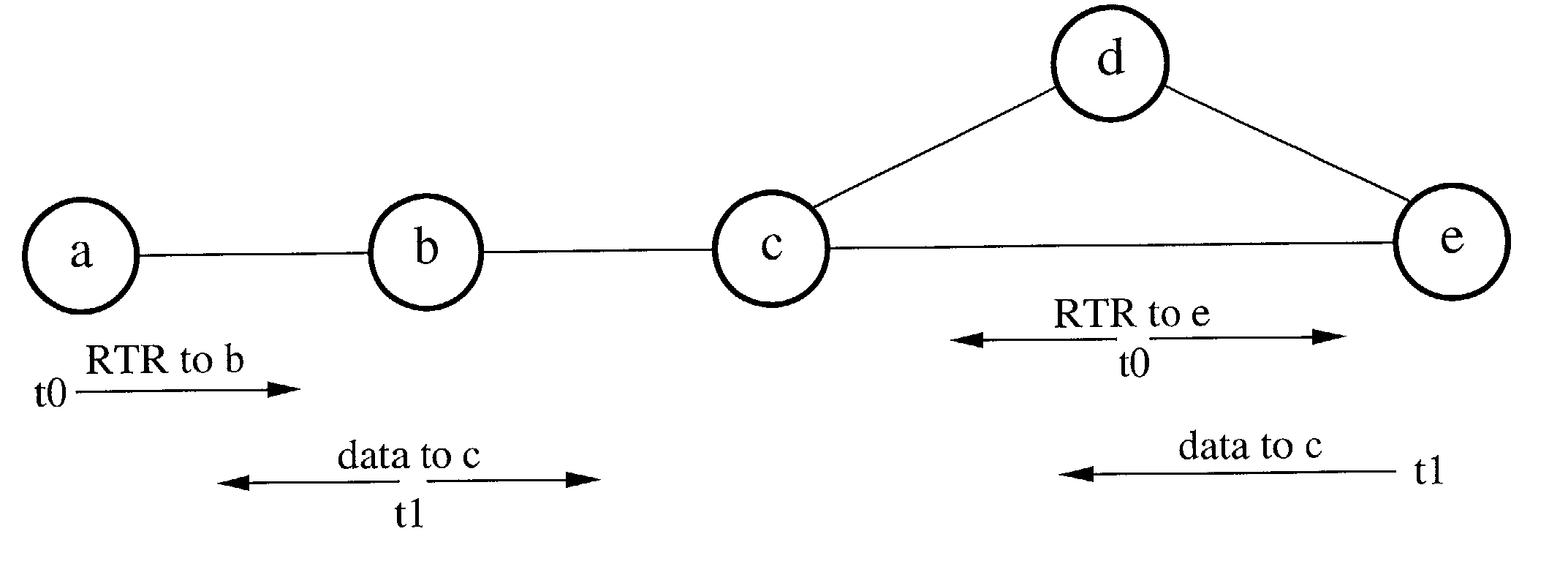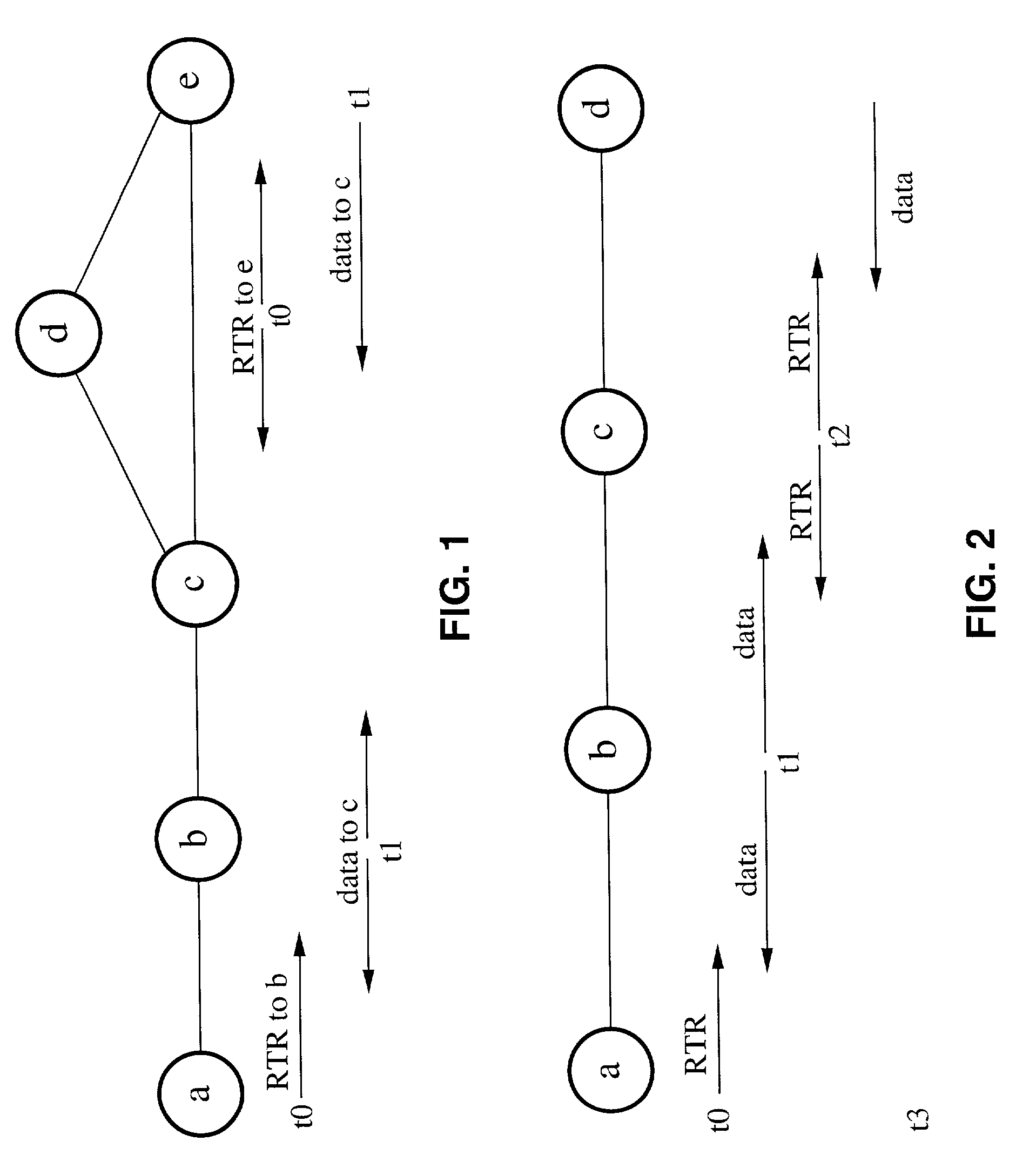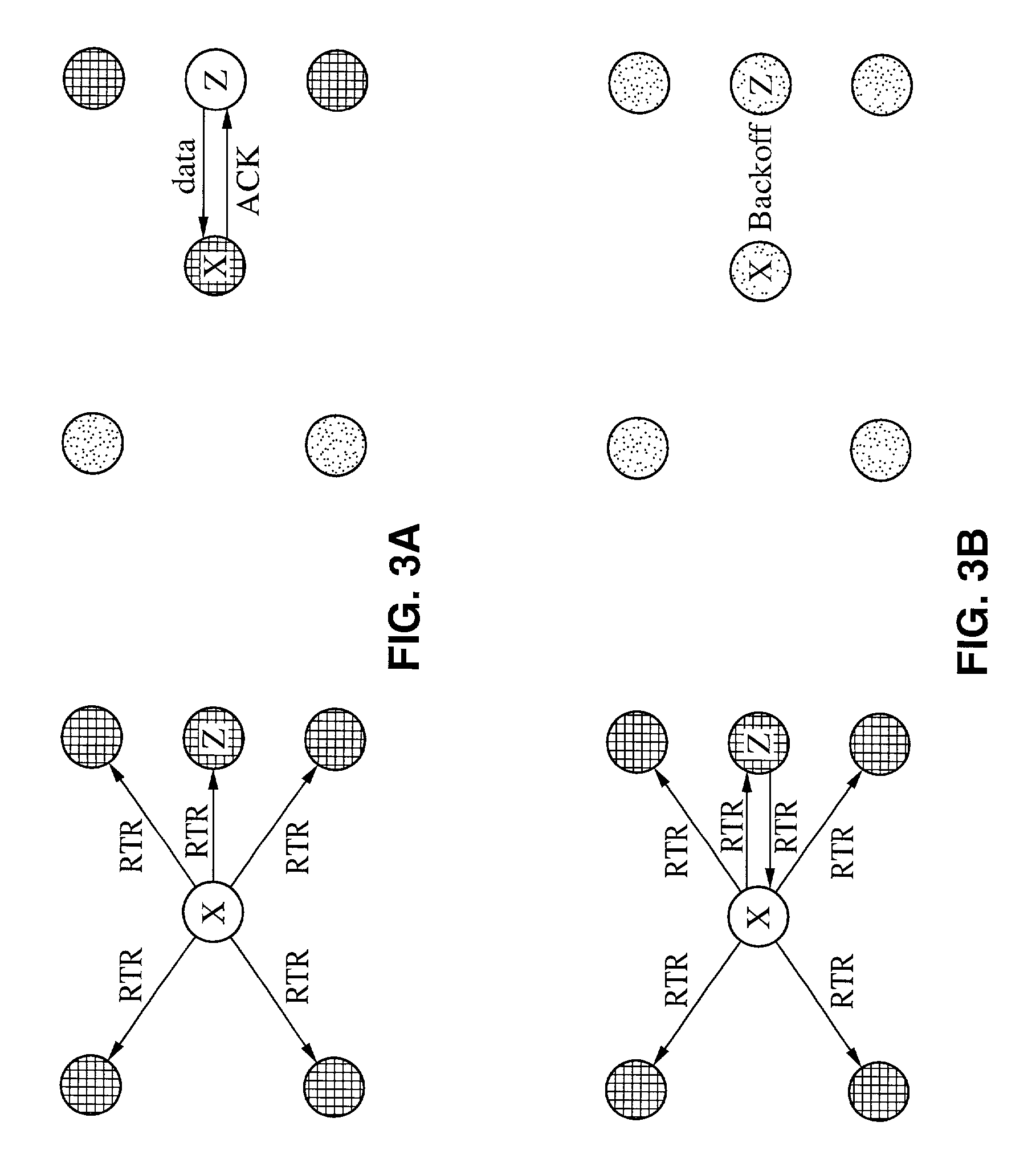Receiver-initiated multiple access for ad-hoc networks (RIMA)
a technology of ad-hoc networks and multiple accesses, applied in the field of wireless ad-hoc networking, can solve the problems of reducing the performance of the carrier-sense multiple access (csma) protocol, and the inability of the maca-bi protocol when utilized in the wireless network to prevent data packet collisions within networks containing hidden terminals, etc., and achieves the effect of increasing efficiency
- Summary
- Abstract
- Description
- Claims
- Application Information
AI Technical Summary
Benefits of technology
Problems solved by technology
Method used
Image
Examples
Embodiment Construction
[0042]The present invention will now be described with reference to FIG. 1 through FIG. 12, which are for illustrative purposes. It will be appreciated that the apparatus may vary as to configuration and as to details of the parts, and that the method may vary as to the specific steps and sequence, without departing from the basic concepts as disclosed herein.
1. Receiver-Initiated Collision-Avoidance
[0043]A number of critical design issues exist in receiver-initiated MAC protocols over a single channel, including (a) the choice of whether or not to use carrier sensing, (b) how to persist transmitting packets, (c) how to resolve collisions, and (d) deciding upon the method by which the receiver polls neighboring nodes in the network for data packets.
[0044]Carrier sensing is required to avoid collisions of data packets in sender-initiated collision-avoidance over single-channel networks in which transmissions occur in an asynchronous manner, such as without time slotting. It should be...
PUM
 Login to View More
Login to View More Abstract
Description
Claims
Application Information
 Login to View More
Login to View More - R&D
- Intellectual Property
- Life Sciences
- Materials
- Tech Scout
- Unparalleled Data Quality
- Higher Quality Content
- 60% Fewer Hallucinations
Browse by: Latest US Patents, China's latest patents, Technical Efficacy Thesaurus, Application Domain, Technology Topic, Popular Technical Reports.
© 2025 PatSnap. All rights reserved.Legal|Privacy policy|Modern Slavery Act Transparency Statement|Sitemap|About US| Contact US: help@patsnap.com



